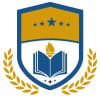The Global Research Alliance on Agricultural Greenhouse Gases was launched in December 2009 and now has 46 member countries from all regions of the world. For more information on the membership, please see the Community pages.
The Alliance is focused on research, development and extension of technologies and practices that will help deliver ways to grow more food (and more climate-resilient food systems) without growing greenhouse gas emissions.
The Alliance is founded on the voluntary, collaborative efforts of countries. Its membership and governance arrangements are underpinned by a Charter, signed by all participating countries.
This Charter establishes the Alliance Council, which is the representative body of all member countries. The current Chair of the Council the Netherlands.
Members of the Alliance aim to deepen and broaden mitigation research efforts across the agricultural sub-sectors of paddy rice, cropping and livestock, and the cross-cutting themes of soil carbon and nitrogen cycling and inventories and measurement issues. Groups have been set up to address these areas of work. These Groups have developed work plans that bring countries and other partners together in research collaborations, as well as to share knowledge and best practices, build capacity and capability amongst scientists and other practitioners, and move towards breakthrough solutions in addressing agricultural greenhouse gas emissions.
A Secretariat, currently hosted by New Zealand, supports the work of the Council and the Research and Cross-Cutting Groups.
Research Groups
Paddy Rice
The Alliance’s Paddy Rice Research Group is working together to find ways to reduce the emissions intensity of paddy rice cultivation systems, while improving its overall production efficiency. Trade-offs with emissions of nitrous oxide and changes of the quantity of carbon stored in paddy soils are also being considered.
The Group is now focusing on developing into two sub-Groups: Latin American sub-Group including CIAT as partner and Asia sub-Group.
Livestock
The Group has identified the following vision for its livestock-related research activities:
> Increase agriculture production with lower emissions: Feeding the world within the carrying capacity of earth
> Improve global cooperation in research & technology: Accelerate/strengthen knowledge and technology development that would not happen without the Alliance
> Work with farmers and partners to provide knowledge: Develop relevant mitigation options and strengthen productivity and resilience of food systems.
Croplands
The Group will work together to find ways to limit the losses to the atmosphere of valuable carbon and nitrogen from crops and soils, and to transfer that knowledge and associated technologies to croplands farmers, land managers and policy makers around the world.
Soil Carbon & Nitrogen Cycling
The aim of the Soil Carbon & Nitrogen cycling cross-cutting group (SCNC) is to improve and assess models and methodologies related to soil carbon and nitrogen cycling and to evaluate mitigation options through modeling.
